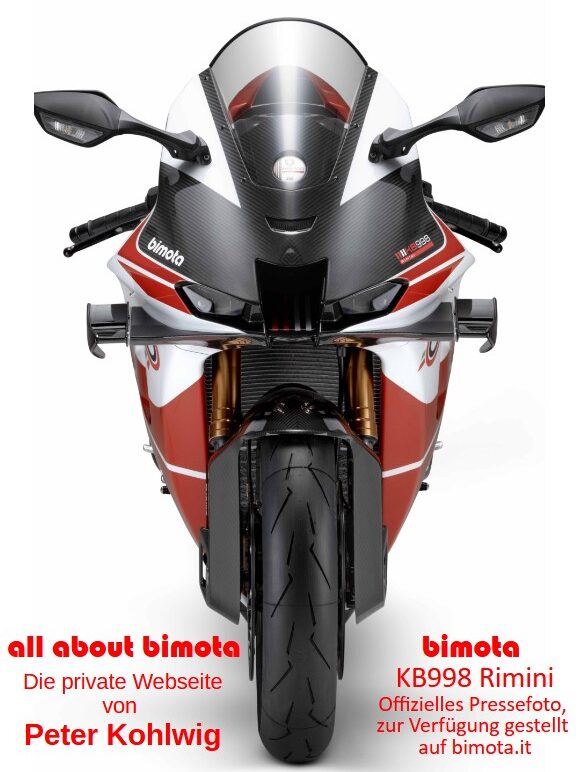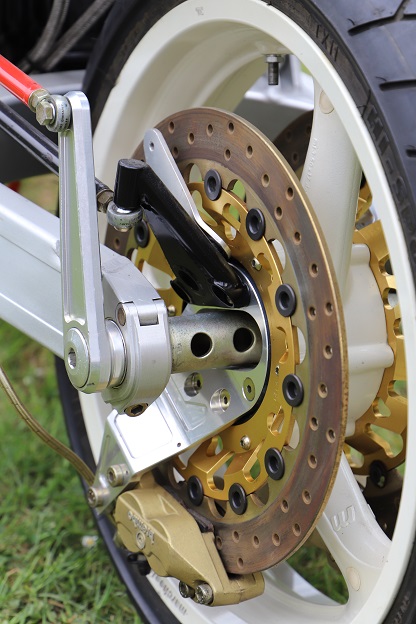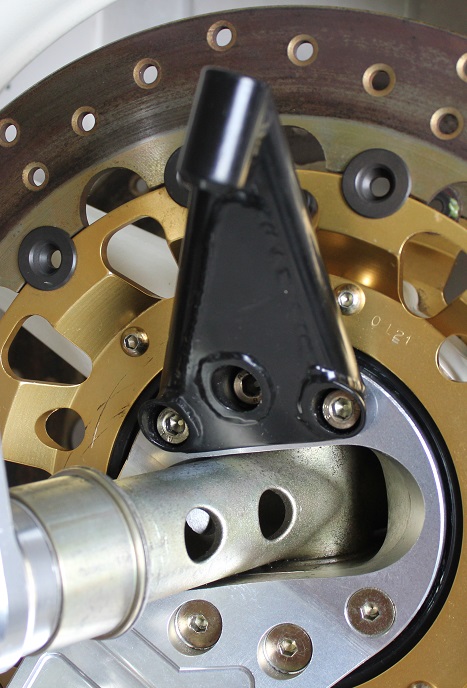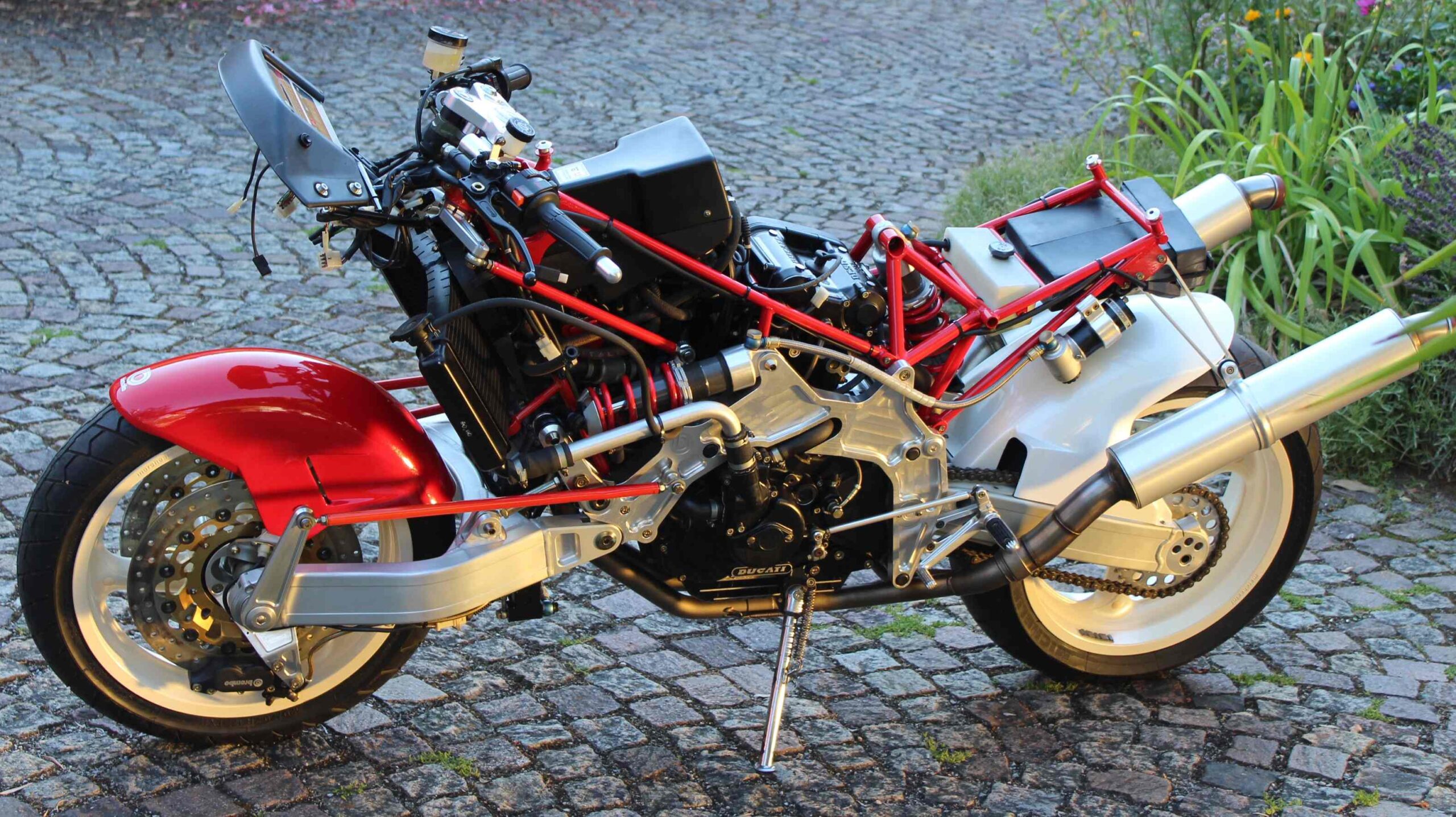
| Designer | Pier Luigi Marconi | Premiere | Cologne 1990 |
| Production period | 1990 – 1991 | Production number | 127 |
| Power | 75 KW (102 PS) | Displacement | 851 cc |
| Topspeed | 230 km/h | Weight | wet 213 kg dry188 kg |
| Price | 52.800 DM (1991) | Colours | wite / red |
| Technical basis | Ducati 851 |
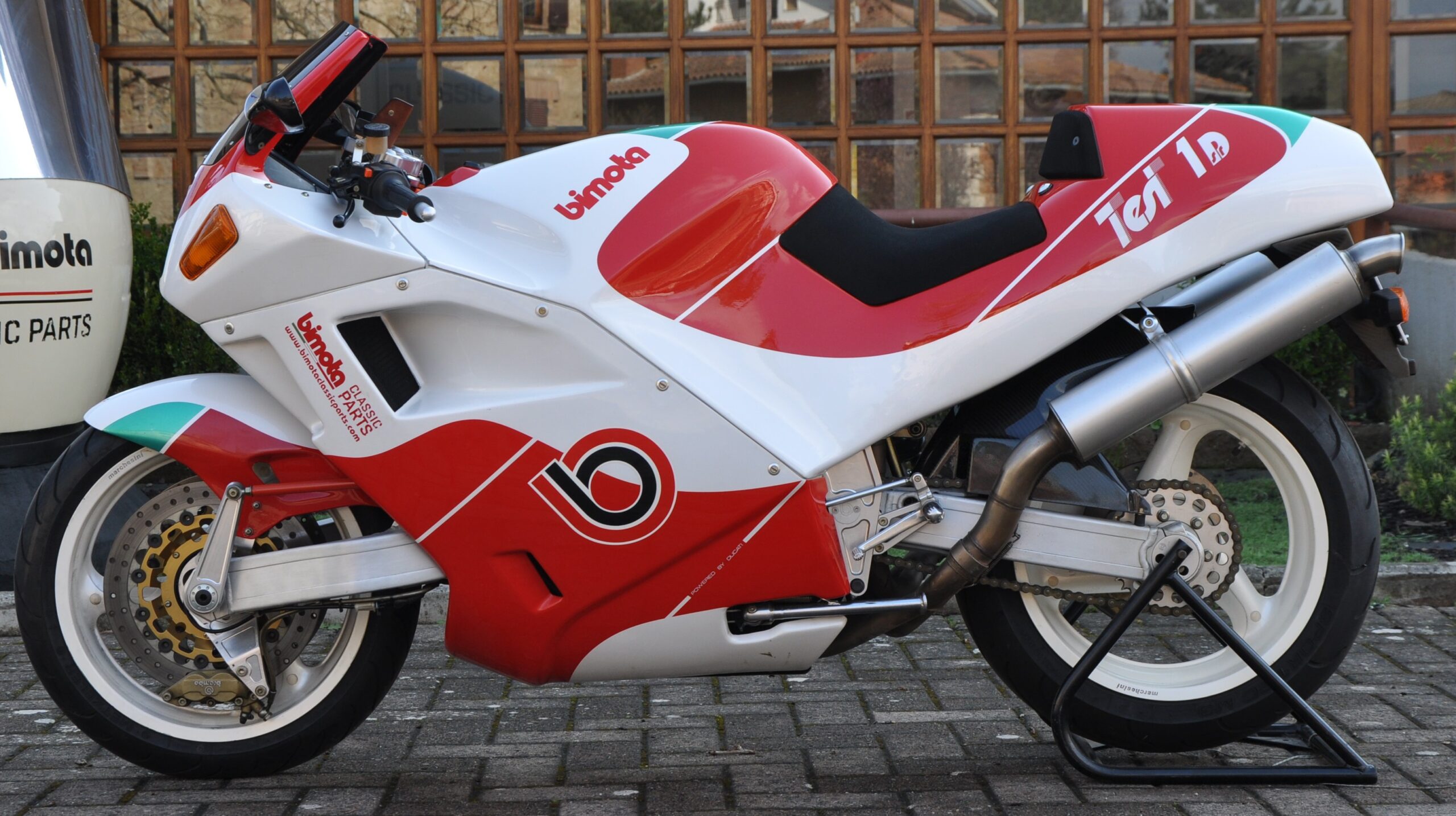
Massimo Tamburini, founder and technical director of Bimota, designs frames and chassis that adhere to his four main criteria: stability, low weight, aesthetics, and function. Despite all the innovations introduced in motorcycle construction over the years, he continues to see the front suspension as a weak point. When two students from the University of Bologna contact him in the early 1980s to discuss future developments in motorcycle design, they leave with a topic for their thesis (Italian: „tesi“).
The result of their work is presented in 1983 at the Milan Motorcycle Show in the form of a first prototype, featuring a front wheel guided by a double-sided swingarm and hub-center steering. It is only seven years later, after four more prototypes and several successful racing appearances, that the Tesi 1D is introduced as a production model at the IFMA in Cologne in 1990.
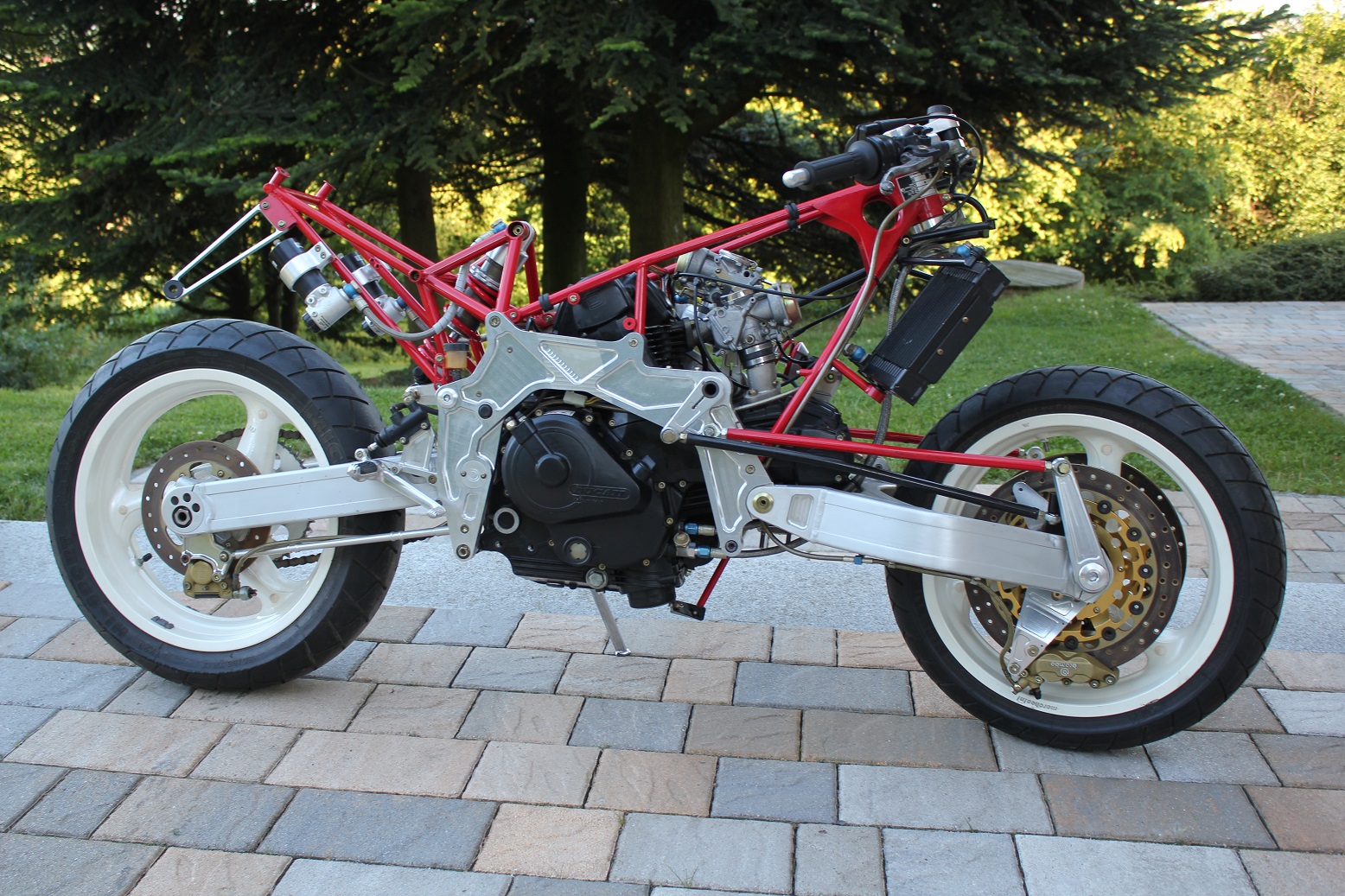
This highlights the immense effort required for a small motorcycle manufacturer to bring such a project to life. The Tesi does not have a conventional frame; instead, it consists of two machined aluminum plates that are bolted to the Ducati 851 engine at four points on each side. These plates support both swingarms, the front and rear subframes, the attachment of the front suspension, and the steering mechanism.
The steering movement is transmitted via a linkage below the steering head, two connecting rods, three additional levers, and a shaft to the hub steering arm.
The dynamic advantages of a front swingarm compared to a telescopic fork lie in the separation of functions. A fork must guide the front wheel, i.e., keep it on the chosen track, absorb shocks, dampen vibrations, and handle braking forces.
When braking on uneven surfaces, the fork compresses, which reduces the remaining suspension travel needed to compensate for road irregularities. Additionally, as the fork compresses, the chassis geometry changes because the trail shortens. The fork is subjected to high forces, especially during braking, which manufacturers counter by continuously increasing tube diameters and using stabilizers. The more stress placed on the fork, the greater the friction in the suspension and damping system, reducing responsiveness. The stiffness of a swingarm is significantly greater than that of conventional forks and even upside-down forks.
On the Tesi 1D, the front swingarm is connected to the left frame plate via a central shock absorber. The braking forces are directed through the swingarm and tie rods directly into the frame plates, thus reducing their impact on front-wheel control. The drawbacks of the system include the small steering angle, the higher unsprung mass, and the increased costs.
The upper red tie rods transfer braking forces into the frame. The small angle between the tie rods and the swingarm ensures that the front wheel slightly compresses during braking, giving the rider better feedback on the braking process.
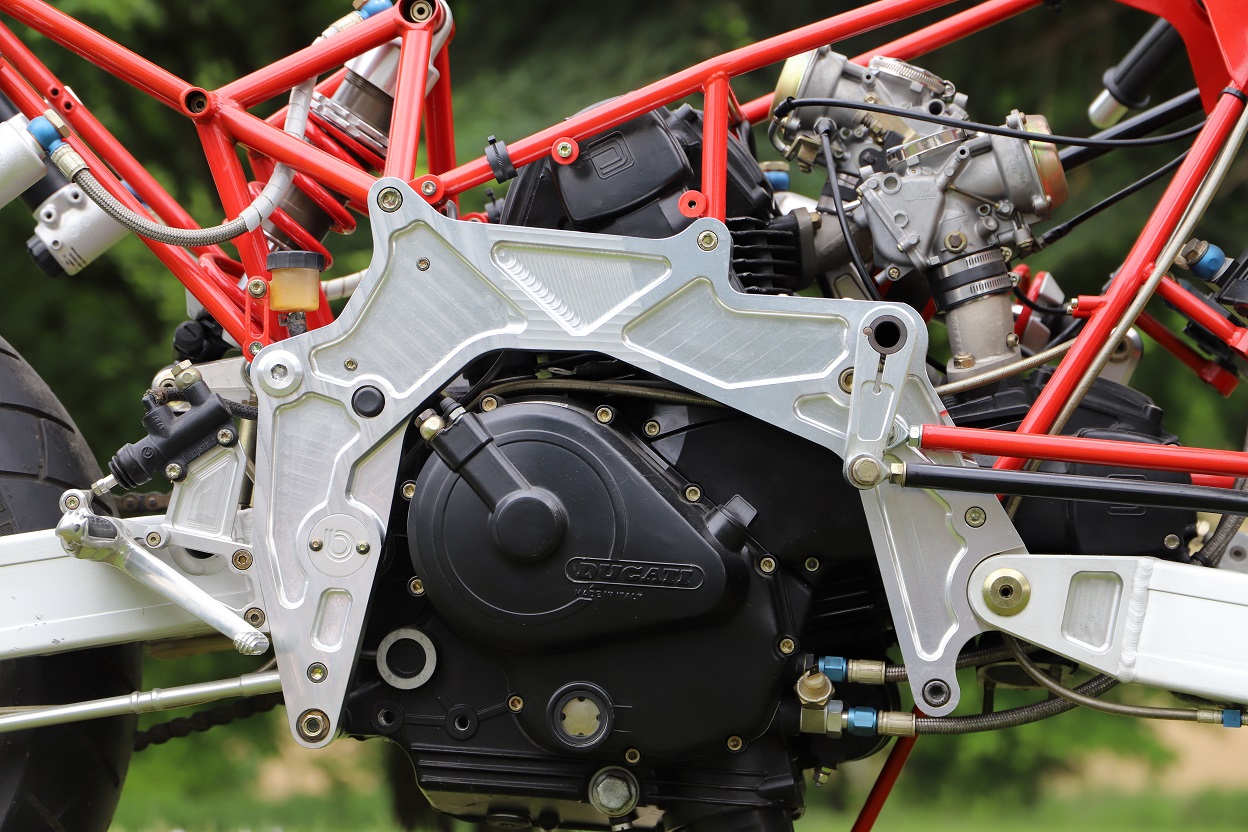
The Tesi is powered by the 90° V2 Ducati 851 engine with four valves per cylinder and desmodromic timing. Equipped with a Weber-Marelli fuel injection system, the engine produces 103 hp at 9500 rpm.
The motorcycle magazine PS reports in issue 1 of 1991 about test rides with the Tesi 1D at the Sante Moniva racetrack, today’s Grand Prix circuit of Misano, and concludes:
„The Bimota team has once again demonstrated that they are capable of designing innovative technology down to the finest detail. The result is always a high-caliber motorcycle that is often far ahead of the competition. However, it is also a motorcycle that cannot be measured by conventional standards – always something truly special.“
In 1992 and 1993, Bimota produced the Tesi 1D J 400, a model exclusively for the Japanese market, featuring the engine known from the DB1 J 400. It is the only variant equipped with carburetors instead of a Weber-Marelli injection system. The two frame plates are adapted to the smaller engine. Otherwise, it is technically identical to its larger sisters. A total of 50 units were produced, all in red/white/gray.

